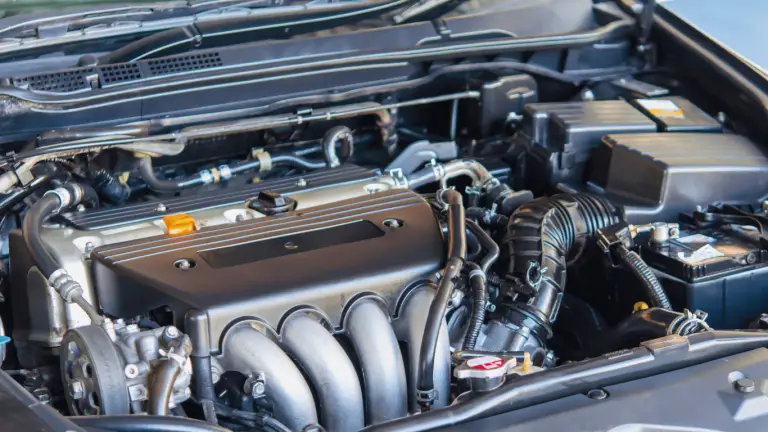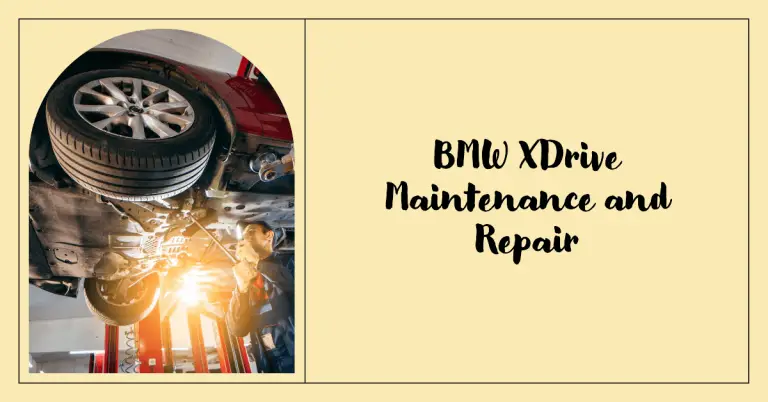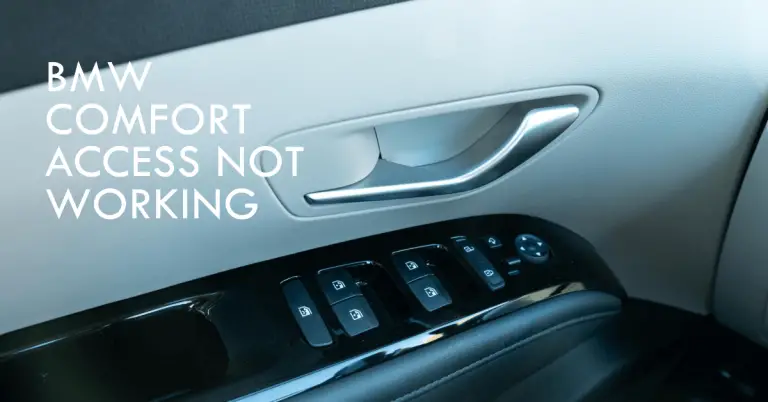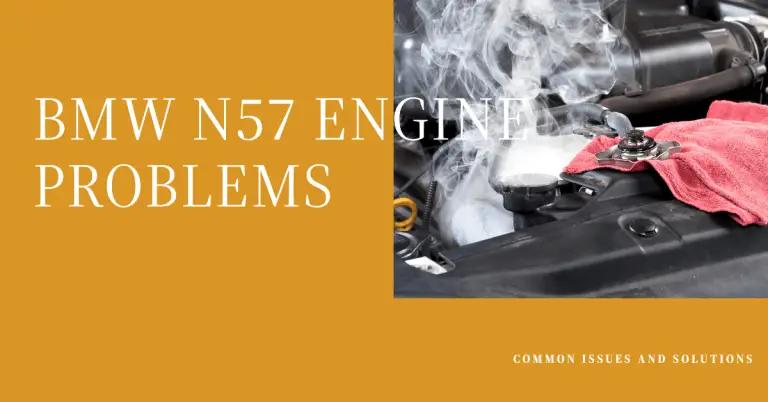Engine Malfunction Reduced Power BMW: Causes and Solutions
Driving down the highway when suddenly an ominous warning lights up on your BMW’s dashboard: “Engine Malfunction – Reduced Power”. The engine seems to lose power as you struggle to accelerate. You pull over, turn off and restart the car, and hope the problem disappears. But soon the dreaded reduced engine power message returns along with sluggish acceleration and poor performance.
This issue can leave BMW owners extremely frustrated and concerned. What exactly does the reduced engine power warning mean? What causes it? And most importantly, how can you get your BMW back to running smoothly again?
In short, the reduced power message indicates that a problem is limiting your BMW’s engine performance. Faulty sensors, bad actuators, clogged components, even vacuum leaks can activate the warning light and reduce power. The good news is that with the right diagnostic steps and repairs, you can often resolve the issue yourself or with a mechanic’s help.
In this detailed guide, we’ll cover everything you need to know about diagnosing and fixing BMW reduced engine power, including:
- Common causes of the reduced power warning light
- Steps to diagnose the specific problem
- Repairing common issues like throttle body, mass airflow sensors, and vacuum leaks
- Resetting error codes
- FAQs on living with reduced power
- And much more! Let’s dive in.
What Does the “Reduced Engine Power” Warning Light Mean?
The check engine light paired with a “Reduced Engine Power” message on your BMW’s instrument cluster is indicating that the vehicle’s ECU (Engine Control Unit) has detected a problem that requires lowering engine power output as a precautionary measure.
Some of the key things to know about BMW reduced engine power:
- It signifies that a mechanical or electrical issue is limiting engine performance. The ECU determines something is wrong and initiates a power reduction.
- The goal is to protect the engine from damage due to the problem while allowing limited power so you can drive for servicing.
- You may notice a lack of acceleration and speed when trying to accelerate. The car will feel sluggish.
- Causes range from faulty sensors to problems with air flow, ignition, or fuel delivery.
Don’t ignore this warning. Driving long distances at high speeds with reduced power can risk further damage. Have the car inspected and resolve the underlying problem promptly.
What Causes Reduced Engine Power in a BMW?
There are a several common issues that can trigger BMW’s engine computer to limit power. Here are some of the most likely culprits:
Faulty Throttle Body or Throttle Actuator
The throttle body is a key component that regulates air intake into the engine. It contains a throttle plate that opens and closes to control airflow. The throttle actuator is the electric motor that controls movement of the throttle plate.
If either the throttle body or actuator becomes damaged or excessively dirty, it can cause improper throttle control. The ECU detects the irregular airflow and triggers reduced power mode.
Symptoms pointing to a faulty throttle body/actuator include:
- Sporadic loss of power when accelerating. Usually more noticeable at low RPMs.
- Sudden jerking or uneven acceleration.
- Rattling noise from the throttle body area.
- Check engine light and reduced power warning comes on/off.
Mass Air Flow (MAF) Sensor Problems
The mass airflow sensor measures the volume of air entering the engine. This allows the ECU to balance air and fuel ratios.
If the MAF sensor tube becomes clogged with debris or the sensor component fails, it transmits incorrect airflow readings to the ECU. The computer miscalculates fuel needs and reduces power to prevent engine damage.
Potential signs of a bad mass airflow sensor:
- Engine stalling, sputtering, or misfiring during acceleration
- Worse fuel efficiency and gas mileage
- Vacuum leaks around a dirty or cracked MAF sensor
Vacuum Leaks
Vacuum leaks allow unmetered air to enter the intake and disrupt the air-fuel balance. The ECU will detect higher than normal intake airflow and set off the reduced power warning.
Leaks can develop around intake gaskets, hoses, the mass airflow sensor, throttle body, or PCV valve.
Clues pointing to a vacuum leak:
- A high-pitched whistling or sucking sound from the engine bay
- Engine rough idling or stalling
- CEL and reduced power activated but no other symptoms
Bad Crankshaft / Camshaft Position Sensors
These sensors monitor engine timing and the rotational positions of the crankshaft and camshaft. If either sensor fails, the ECU loses proper timing info which can lead to reduced power mode.
Cam or crank sensor issues may produce:
- The car not starting or intermittently stalling.
- Very rough idle and acceleration.
- Oil leaks coming from the sensor housing.
- Repeated CEL/reduced power even after repairs.
Faulty Valve Timing
Incorrect valve timing can cause compression issues, misfires, and poor optimization of the engine’s air-fuel mixture. As with other problems, the ECU will detect something is amiss and initiate a power reduction.
Symptoms of faulty valve timing:
- Poor acceleration
- Engine misfires either at idle or under load.
- Rattling noise from engine bay at idle.
- Oil leaking from valve cover gaskets.
There are other possible causes like wiring issues, bad spark plugs, clogged fuel injectors, low fuel pressure, and more. But the problems above cover the most common causes of reduced power mode in BMWs.
How to Diagnose BMW Reduced Engine Power?
Diagnosing the exact cause of your BMW’s lowered power requires methodically testing different components and systems. Here is an overview of the diagnostic process:
1. Read Trouble Codes with Scanner
Connecting an OBD-II scanner and pulling diagnostic trouble codes (DTCs) is the critical first step. BMW trouble codes will point to the sensor or component triggering reduced power such as:
- P2101 – Throttle Actuator Malfunction
- P0101 – Mass Airflow Sensor Malfunction
- P0171 – System too Lean (vacuum leak indicated)
- P0340 – Camshaft Position Sensor Fault
This gives you a direct indicator of where to start investigating.
2. Check Service Engine Light
Take note of what the service engine soon or check engine light is doing. A solid light indicates a current fault. A flashing light means a severe misfire is happening and you should reduce driving before engine damage occurs.
3. Inspect Battery, Fuel, and Ignition System
Rule out more basic problems causing engine issues:
- Load test battery to confirm adequate voltage and no dead cells.
- Check spark plugs for fouling or damage. Replace if needed.
- Make sure fuel injectors are clean and functioning.
- Verify fuel pressure is within specifications.
4. Monitor RPMs and Performance
Monitor engine RPMs at idle, acceleration, and highway speeds. Listen for misfires or rattling. Test for lack of power when accelerating. Any irregular patterns imply a sensor or performance issue.
5. Check for Vacuum Leaks
Use a smoke machine on intake components to detect vacuum leaks. Also inspect hoses, gaskets, and seals for cracking or detachment. Tighten loose connections.
Methodically testing components related to the trouble codes saves guessing and speeds up diagnosing the root cause. Once identified, you can move to the next step – making the necessary repairs.
How to Fix BMW Reduced Engine Power?
We’ll dive into how to fix the most common causes of reduced power in order. Follow along to learn the replacement or repair steps needed to get your BMW back up to full power.
Replace Faulty Throttle Body
If trouble codes point to a malfunctioning throttle body or actuator, replacement is typically needed. Here is an overview:
Locate and Remove the Throttle Body
- The throttle body is found connected to the air intake tubing.
- Disconnect the electrical connector and air intake hoses.
- Remove the fasteners securing the throttle body to the intake.
- Lift the throttle body out of the engine bay.
Install the New Throttle Body
- Transfer any necessary gaskets and hardware.
- Position the new throttle body and reconnect all electrical connectors and air hoses.
- Secure it with the mounting bolts.
- Follow instructions to relearn the throttle position with a scanner tool.
When buying a replacement, you can choose OEM BMW or quality aftermarket throttle bodies often at significant cost savings. Depending on your mechanical comfort, the DIY cost is $250-$400 for parts. Taking it to a shop runs $450-$800 for parts and labor.
Clean or Replace Mass Air Flow Sensor
A dirty MAF sensor can often be cleaned and restored to working order. A damaged or permanently clogged sensor will need replacement.
DIY Cleaning Method
- Remove the mass airflow sensor from the air intake tube.
- Use MAF cleaner spray and a lint-free cloth to gently clean the sensor wire and housing.
- Ensure you don’t bend or damage the fragile sensor wire.
- Let dry completely before reinstalling.
- Reset check engine light. Road test to see if power is restored.
For replacement, plan around $120-$260 for a new BMW MAF sensor. Shop rates run $320-$450 for parts and labor.
Always try cleaning first before shelling out for a new sensor. But don’t hesitate to replace a clearly damaged air flow sensor. These are sensitive components and dirt or debris will continue to foul the sensor.
Fix Vacuum Leaks
Any intake system leaks must be repaired to prevent unmetered air from entering system:
Inspect Hoses and Gaskets
- Visual inspect all rubber intake hoses for cracks or loose connections.
- Check for leaks around gaskets between the air filter housing, MAF sensor, throttle body.
- Look for detached, cracked, or missing gaskets that compromise the seal.
- Tighten all loose clamps and connections. Replace cracked hoses and defective gaskets.
For Major Leaks – Replace Components
- If the MAF sensor or throttle body itself has a vacuum leak, replacement may be required.
- Test the PCV valve by shaking it and listening for rattling. If faulty, install a new valve.
Nearly all vacuum leaks can be fixed with gasket replacement, new hoses, or tightened connections after a close inspection. Parts usually cost less than $50 total. Take it to a shop if you have difficulty isolating the leak location.
Reset Engine Computer and Fault Codes
After finishing any repairs, the car’s ECU needs a reset to clear error codes and return to normal operation.
Resetting BMW Computer System
- After repairs, disconnect car battery for 15 minutes to reset computer.
- Alternatively, use a scan tool to clear DTC fault codes.
- Drive the car normally for 10-15 minutes to retest engine power.
- If the check engine light or reduced power returns, further diagnosis is needed.
Resetting the ECU gives the engine computer a fresh start to relearn normal operation rather than relying on faulty baseline data. This is a crucial step to conclude reduced power repairs.
FAQs – Living with BMW Reduced Engine Power
Below are answers to some frequently asked questions about driving and repairing BMW reduced power issues:
Is it Safe to Drive with Reduced Engine Power?
Limited short drives at moderate speeds and low RPMs are likely fine in the short term. But extended high-speed driving can risk stressing a weakened engine. Schedule repair work promptly.
Why Does the Problem Come and Go?
Because power reduction is electronically controlled by the ECU, the warning may come and go. This points to an intermittent issue like a faulty sensor not always malfunctioning.
Can I Repair Reduced Power Myself or Should I Go to a Shop?
On most BMWs, DIYers can tackle repairs like throttle body, MAF and vacuum leak fixes with some mechanical skill. Crankshaft/camshaft sensors require advanced expertise. Evaluate your skill level.
What is the Average Repair Cost for Reduced Engine Power?
Anywhere from $200 – $850+ is common depending on parts needing replacement and shop labor rates. Throttle body or MAF sensor repairs tend to be cheaper than engine timing repairs.
Should I Keep Driving with Reduced Power? Will it Cause More Damage?
Don’t put excess miles on an impaired engine. The ECU is trying to prevent damage, but prolonged use stresses the engine. Seek repairs before costly engine components are harmed.
The Bottom Line
The reduced engine power warning is never something to ignore. While it can stem from a range of issues, the problem-solving tips outlined here should help isolate the cause. In many cases, repairs come down to replacing common components like the throttle body, MAF sensor, or fixing vacuum leaks.
Don’t hesitate to enlist a trusted BMW mechanic if the diagnostic steps prove overwhelming. The goal is to identify and resolve the underlying problem as soon as possible to avoid unnecessary engine wear and larger repair bills down the road.
With proper troubleshooting and repairs, you can often restore your BMW to full power operation and enjoy slingshot acceleration as it should be! Clearing those troubling engine malfunction lights for good is a great feeling.







